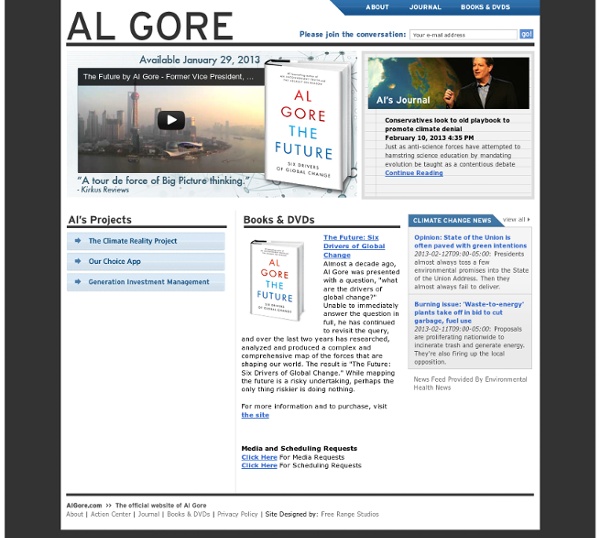



Video: The Greatest Speech Ever Made – A Must See This is Charlie Chaplin’s final speech in The Great Dictator, and is inarguably the greatest speech ever given. Please consider these dear words and their relevance to our current state of affairs. We all want to help one another. Human beings are like that. We want to live by each other’s happiness – not by each other’s misery. We don’t want to hate and despise one another. Greed has poisoned men’s souls, has barricaded the world with hate, has goose-stepped us into misery and bloodshed. Let us fight to free the world – to do away with national barriers – to do away with greed, with hate and intolerance. Share and Enjoy
Leading New Zealand's Outdoor Sector | Outdoors New Zealand Sustainable Innovation Research | The Centre for Sustainable Design The Centre for Sustainable Design (CfSD) offers consultancy services based on its core competence and has undertaken projects for both private and public sector clients. Considerable expertise has been built in eco-design in the electronics sector, especially in South-East Asia. CfSD has completed research in areas related to sustainable consumption and production (SCP), ‘producer responsibility’, product policy, eco-innovation, eco-design, design for remanufacturing, eco(packaging) design, marketing, procurement, supply chain management, product-servicesystems (PSS) and new business models. CfSD has also led overseas missions to Japan, China, Hong Kong and Taiwan to explore the ‘state of the art’ in sustainable innovation and product sustainability. Research studies undertaken by The Centre for Sustainable Design include: Eco-design for the Construction Industry Martin Charter, Scott Keiller and Vic Clements, October 2013 Download report Download report Download report Download report
166 Free Documentaries That Will Expand Your Consciousness Here is a list of over 100 consciousness expanding documentaries that will assist you in your evolution, all of which can watched for free online in the links below. Enjoy! 109. The 11th Hour (2007) 110. Paradise With Side Effects (2004) 111. Starsuckers (2009) 112. The First 119 Originally posted on: OpenBoxThinking 120. 121. 122. 123. 124. 125. 126. 127. 128. 129. 130. 131. 132. 133. 134. 135. 136. 137. 138. 139. 140. 141. 142. 143. 144. 145. 146. 147. 148. 149. 150. 151. 152. 153. 154. 155. 156. 157. 158. 159. 160. 161. 162. 163. 164. 165. 166. 167. Thanks to Higher Perspective and The Mind Unleashed. Share and Enjoy
NZ Outdoor Instructors Association - Home Sustainable Sources